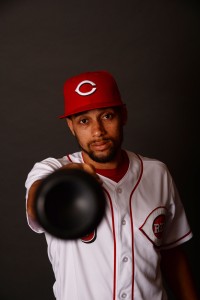The Rays have claimed right-hander Jumbo Diaz off waivers from the Reds, per MLB.com’s Mark Sheldon (on Twitter). Diaz had been designated for assignment late last week when the Reds claimed Christian Walker from the Braves. The Rays placed right-hander Nathan Eovaldi, who will miss the 2017 season following Tommy John/flexor surgery, on the 60-day disabled list to create a spot on the roster.
The 33-year-old Diaz posted a seemingly palatable 3.14 earned run average in 43 innings out of the Cincinnati bullpen last season, but the hard-throwing righty also displayed some troubling trends. Diaz posted career-worst marks in K/9 (7.7), BB/9 (4.0), swinging-strike rate (10.4 percent) and average fastball velocity (95.9 mph). A .239 BABIP and a strand rate just north of 80 percent also contributed to that impressive 3.14 mark but prompted ERA alternatives like like xFIP (4.60) and SIERA (4.24) to forecast a more pessimistic outlook.
Diaz logged significantly better strikeout and walk rates in his only other two seasons in the Majors, however (2014-15). All told, he carries a 3.65 ERA with 9.4 K/9, 3.3 BB/9, a 43.7 percent ground-ball rate and a heater that has averaged 96.9 miles per hour. Diaz is out of minor league options, so he’ll have to break camp with the Rays at the end of the month or once again be exposed to waivers before he can be sent to the minors. However, the Rays’ opportunity to see Diaz up close will be somewhat limited, as he’s currently pitching for the Dominican Republic in the 2017 World Baseball Classic.

